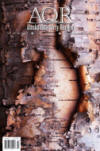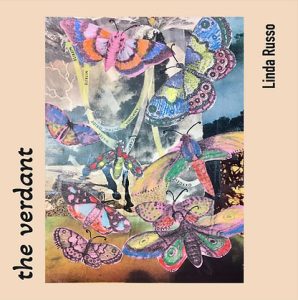Alaska Quarterly Review – Spring/Summer 2013
Alaska Quarterly Review (AQR) is “a journal devoted to contemporary literary art.” This double issue is indeed artful, and reading through the selections is like wandering through a museum one has loved since childhood, from school trips through failed first dates and on into the future of adult wanderings, each stage of life a visitation filled with misgivings, missteps, and misunderstanding.
Alaska Quarterly Review (AQR) is “a journal devoted to contemporary literary art.” This double issue is indeed artful, and reading through the selections is like wandering through a museum one has loved since childhood, from school trips through failed first dates and on into the future of adult wanderings, each stage of life a visitation filled with misgivings, missteps, and misunderstanding.
The two seasons (Spring and Summer), presented together, form a beautiful package under a cover of a “close-up of a birch uprooted by ice during spring thaw,” giving readers something from Alaska that is at once poetic and rough. The seven works of short fiction and two novellas are eclectic and modern, simple and complex. Flannery O’Connor said, “The writer operates at a peculiar crossroads where time and place and eternity somehow meet. His problem is to find that location.” Fortunately for the readers of this issue of AQR, the characters in the works of fiction find themselves precisely at those crossroads where they convey truths about humanity. Using dialogue, description, conflict, and whatever elements are at hand, the fiction writers crafted modern stories with universal themes. Guilt is palpable in Patricia Schultheis’s “Pitiful,” as we follow the immediacy of characters who believe one among them has committed murder. A sad narcissism is interwoven throughout Matt Carmichael’s “The Reenactor.” In all of the fiction, a thematic urgency is couched in craft.
The artifacts sifted from the debris of individual lives comprise the theme of the four nonfiction selections. “Maple Lane” is a mining of Anne Kaier’s past as told to her by her parents and through home movies. As she searches the caves of her early memory, from birth and early life as a newborn with ichthyosis to an adult, she searches her own feelings among her parents’ reconstructed actions and emotions surrounding the birth of her and her twin brother, who was unafflicted. Kaier’s exploration yields precious metals of thought and diamonds of love from the uneven earth that is her past. The remaining three essays in the journal are retellings of an early career (Edward Hower’s “What Can You Do”), a family crisis (Mary Koral’s “Lock Up,” and a search for process in poetry (Leslie Ullman’s “A Brief History of an Imagination”), all drawing readers into the separate and distinct lives.
Reading this double issue of AQR causes one to delve into themes of suicide, murder, death, self-mutilation, failure, and loss. Kristin Robertson’s “Swan Song” is a message to a suicidal friend that explains how the body will resist dying and “feed blood to the most resistant heart.” In Mark Kraushaar’s “The Ring Toss Lady Breaks a Five” readers can only nod at the last two lines: “Things happen, she says, you / can’t take them back.” Gary H. Holthaus’s poem “Meadow at Night” asks, “How can you miss / what you never had?” Finally, in the last poem of the issue “My Daughter’s Journal,” Steve Gehrke laments that he can already “. . . see the freshness / of the world begin to fade in her, that root system of other selves that boredom or discontent / nourishes inside of us as we age. . .” In each of these poems there is loss and an admission that life or someone has failed to protect or reassure someone else.
The collection here satisfies a poetry lover’s need for the archetypal, the contemplative, the observant, and the narrative. All are represented in language carefully crafted by the poets and seductively selected by the editors. From the first to the last, the poems in this double issue ask readers to contemplate the objects in our lives that become important to us over many years of living and consider them the artifacts of meaning when we are gone. From a daughter’s journal to masterful paintings to a photo on a page from Field Guide to the Fossils, no item is bereft of meaning, and everything that we come across could be significant. In Don Stap’s “Remnants,” the speaker lets someone know about the treasures that are to remain unknown and out of reach. Walnuts, the feathers of spoonbills and cedar waxwings, the shell of a box turtle, “Nor the round stone, a conglomerate, / heavy as lead, from the bed of the railroad / tracks, Kalamazoo, autumn, 1971, dusk,” are available from the speaker’s life. Each stanza describes artifacts of a life that someone has not earned.
The return on the investment of time and money is worth it; the catharsis is priceless.
[www.uaa.alaska.edu/aqr]





